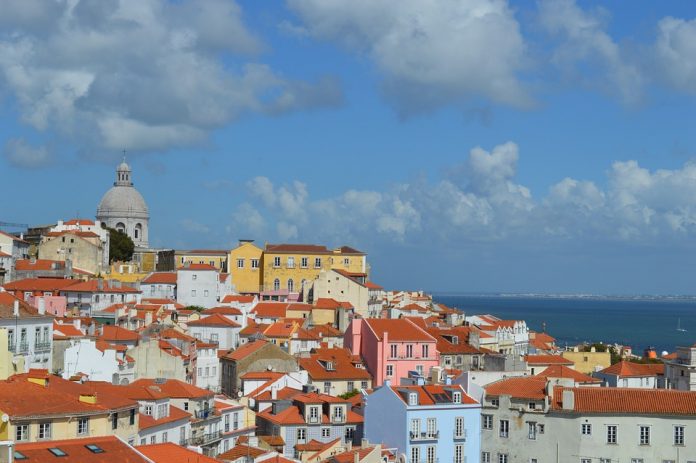Back in the 1500s, Portugal was a name to be reckoned with. Its sailors were amongst the most fearless of the lot, exploring regions never before sailed to and forged trade with the flourishing empires of India and South East Asia. Over the next few centuries, the Portuguese had amassed wealth and gold beyond measure through trade and colonialization and had built some of the most fascinating pieces of architecture, mostly centered around their capital Lisbon.
The mystic of Lisbon (or ‘Lisboa’ as they call in Portuguese) is unheralded in the glory of their high castles, their various gastronomic delights and the cultural integrity that sticks together eons after. When I landed in the capital, what struck me most was the general terrain of the place. Lisbon, situated somewhere near the center of Portugal, sits right on the shore line across the country. Having a very rugged terrain with steep slopes across the city, it takes an experienced driver to navigate the streets. So if you are not too sure of your driving skills, I’d advise public transport because they are affordable and ply around frequently. Just my two cents!
Just like many capital cities in Europe, Lisbon also exhibits various distinct localities inside the city. Moreover, since there are a lot of enchanting stuff in and around all these locales, I’d chart them out, to make it an easier to-do guide around Lisbon.
Alfama
Alfama is the gateway to the old city of Lisbon. In here, you can find many restaurants which serve traditional Portuguese food Francesinha and Bacalhau. While walking around the street, I heard this fascinating tale about the cuisine Francesinha.
Apparently, a hundred years ago, restaurants that did not plan their food resources properly had a lot of food that went to waste in the evening due to a dearth of customers for the day. Soon the restaurants realized that this was a problem and devised a dish that included layering up food that remained at the end of the day. Thus over time, Francesinha was born. Today, the recipe includes bread, french fries, ham, fresh sausage, and steak, covered in a deliberately generous amount of cheese with tomato and beer sauce toppings. Quite a mouthful and definitely something to try out if you are in the city!
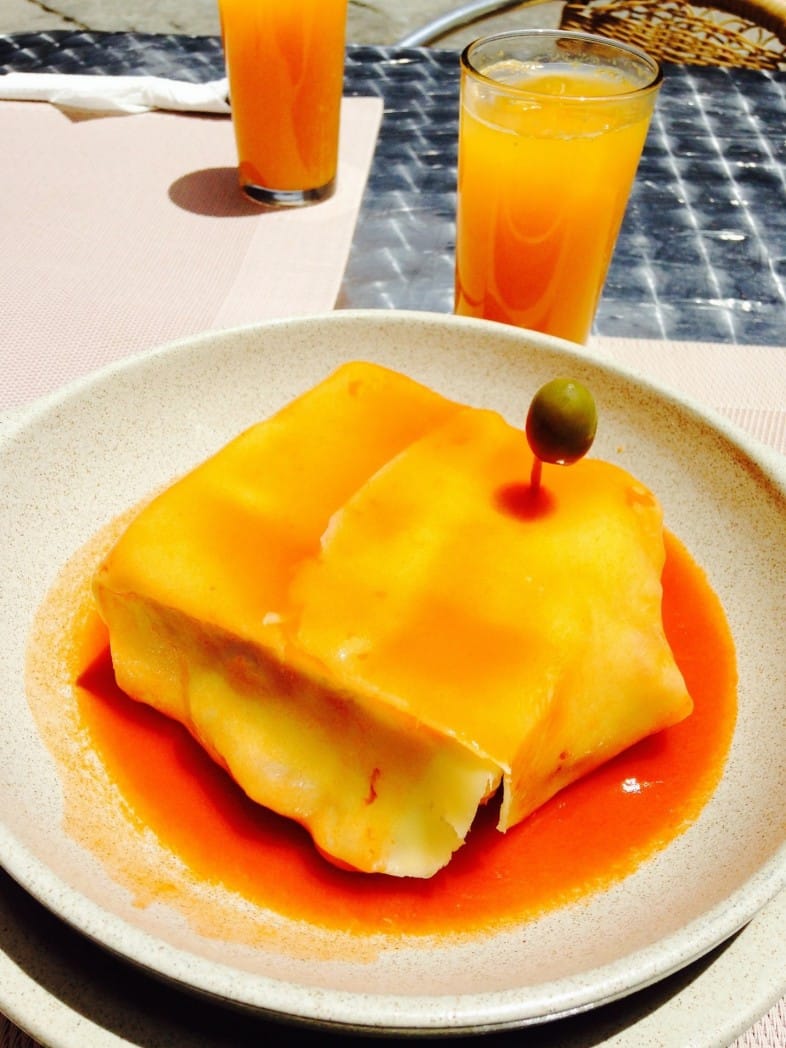
Image credit : spacetrash/Flickr/CC BY 2.0
There is this another legend of Alfama that needs to be talked about. Back in those times, the district of Alfama was relatively poor and a thriving hub for brothels, with most of the decent folk avoiding the place altogether. This changed after the year of 1775, when a disastrous earthquake rocked Lisbon, killing almost 50,000 people in its wake. Nearly all the buildings in the town center were razed to the ground with churches bearing the brunt as well. However, surprisingly, Alfama escaped its fury and was nearly intact. This situation took the Portuguese by surprise. As a religious and god fearing populace, they could not understand the fact that the area with the brothels did not suffer God’s wrath but the rest of the region did. This event supposedly created a wave of acceptance of the Alfama downtrodden and had laid roots to the Portuguese liberalistic tendencies.
All this aside, Alfama houses some of the grand boulevards in town, with cobble stones decked along the way. In here, I have tried including some of the sights and experiences to enjoy in the district while you get treading around.
Portas do Sol viewpoint
This is the posterior end of Alfama after you walk through the winding streets and check out a lot of cool graffiti plastered on the walls. Portas do Sol gives you a view of the brown tiled rooftops of the city’s exterior against the azure river, with quite a liberal dose of sea breeze to boot. This is a good place to click a few pictures as well. Sometimes if you are lucky, you could also listen to some Fado music on the street connecting the viewpoint.
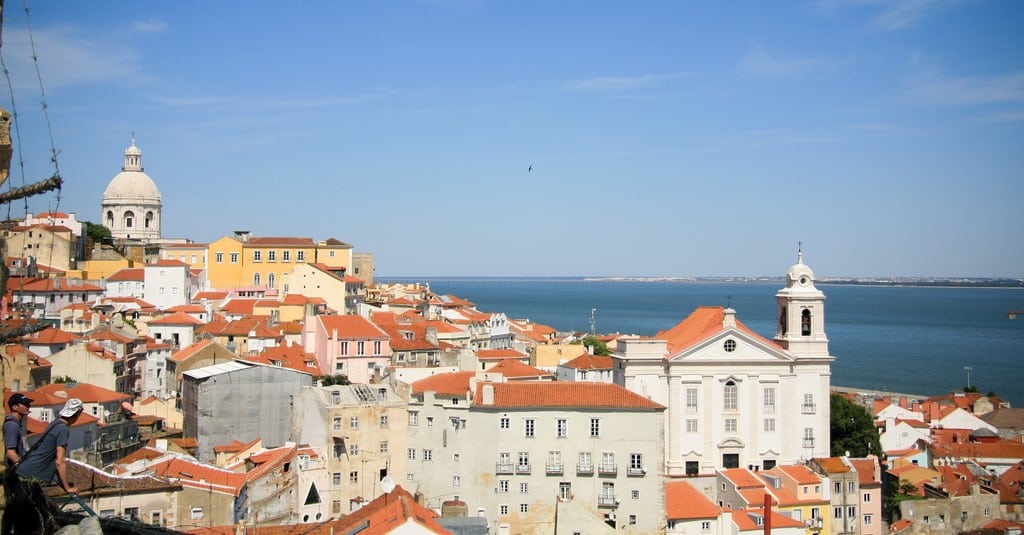
Image credit : Gianpiero Addis/Flickr/CC BY 2.0
Riding the Tram Number 28
The number 28 Lisbon tram is a famous ride around Lisbon. It connects Martim Moniz with Campo Ourique and passes through the popular tourist districts of Graca, Alfama, Baixa, and Estrela. The interesting feature of this specific tram ride is that the carriage dates back to the 1930s and the very nature of it wheezing past traffic on contemporary roads is a good experience to watch out for.
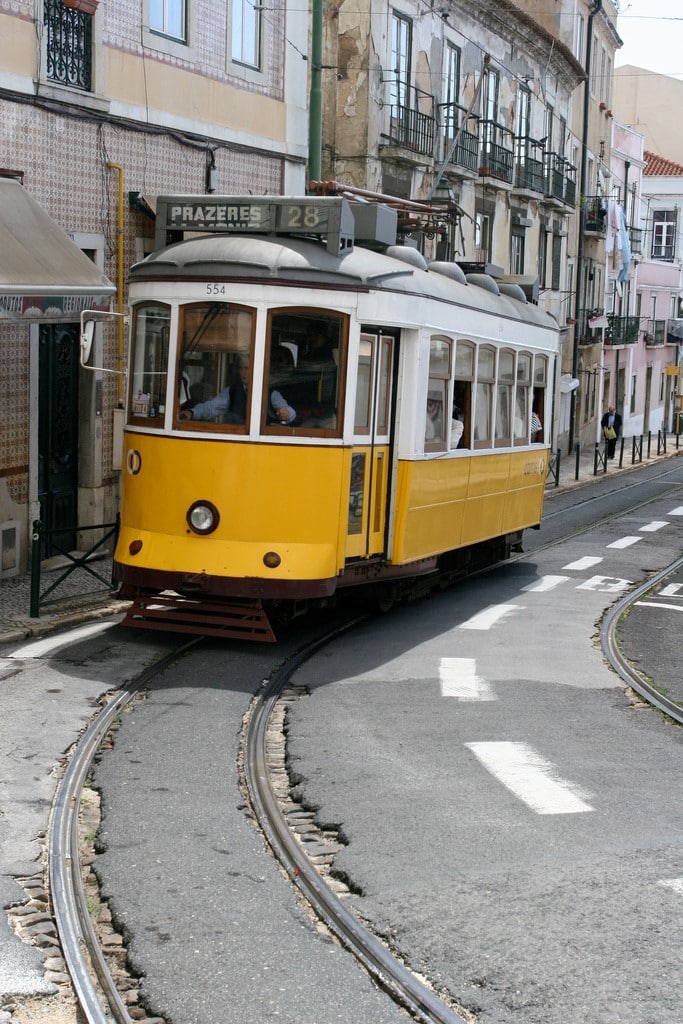
Image credit : zoonabar/Flickr/CC BY 2.0
Top of the National Pantheon of Lisbon
This is another popular tourist destination for having a view on the banks of the Tagus river. The National Pantheon itself is a good place to visit if you are interested in medieval architecture. Moreover, once inside the church, you could get into the elevator which takes you to the top of the dome where you can enjoy 360-degree panoramic views of the whole city.
************
Alfama apart, the city center itself is a place teeming with famous monuments and sights to visit.
Praca do Comercio
This is probably the most famous square in the heart of Lisbon. It holds the merit to be the place which saw probably the only bloodless coup in the history of a country’s independence. In the year of 1974, Portugal got rid of its dictatorship by overthrowing its authoritarian government and replacing it with democracy. This is an achievement since this struggle was mostly peaceful with not a single bullet being fired during the whole episode.
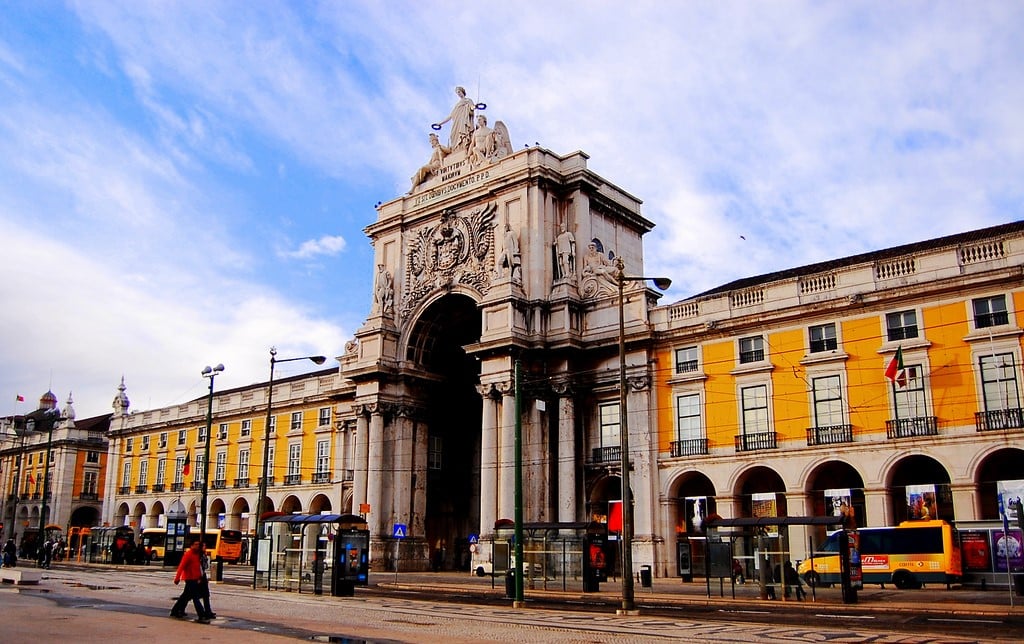
Image credit : joaojap/Flickr/CC BY 2.0
From the Praca do Comercio, you can enjoy breathtaking views towards the Tagus river and have some excellent Portuguese style cuisine from the multitude of restaurants decking the shore.
Santa Justa Lift
Today, the Santa Justa Lift is just another tourist attraction, but a few decades back, a lot of people used it to avoid climbing the steep slope up the Carmo hill. You could pay a few euros to go up and enjoy a splendid view of the city.
However, if you have no intention of paying for the ride, but still want to enjoy the view, I would suggest you follow the path towards the Carmo ruins which leads you up to the top deck.
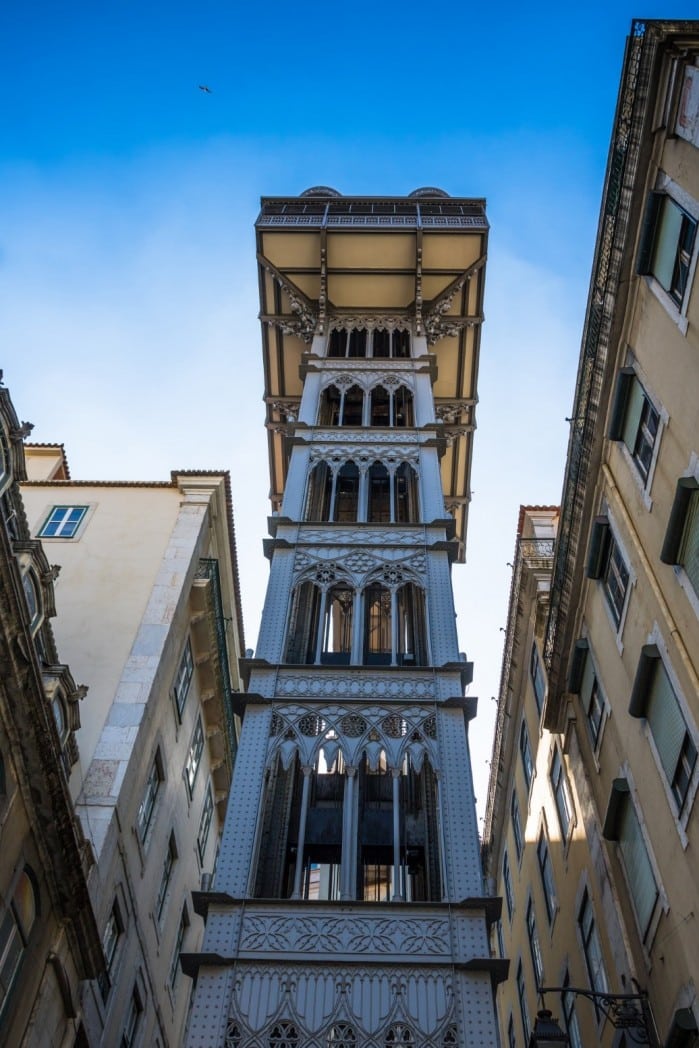
Image credit : infomastern/Flickr/CC BY 2.0
Belem region
The area of Belem is quite famous for the number of museums and especially the Pasteis de Belem, a patisserie known for its world famous Belem cakes. The store throngs with people throughout the day (not for nothing) and if you get the time, I would recommend you try everything on their shelf. They are worth their weight in gold!
************
Sintra
If you had been waiting to know why there was not a single mention of a castle ever since I opened up the article with that – there’s a reason. A few kilometers west of Lisbon is a place called Sintra, which is known to be the place where you can see fairy tales come alive.
Sintra, has a breathtaking mix of castles, museums, palaces, nature and botanical parks, so much so that it would be impossible to explain every one of them in detail. If you are thinking of making a trip to Sintra, make sure to spend at least two days in the place. I assure you that your time there is worth every penny.
Without further ado, I would introduce you to the two most important places that you got to visit when you are in Sintra.
Quinta da Regaleira
The Quinta da Regaleira is bewitching in its beauty, not just with its magnificent 20th-century palace, but also with the natural park that it is built over. Once you enter their premises, you are given a map to roam around, trying to spot exotic locations and outposts to climb and marvel at.
The interesting thing about the place is that it is riddled with underground tunnels and little ponds, which make it all the more beautiful. The tunnels though, are quite scary and are endlessly long, dank and dark. Therefore, it is advisable to carry a torch or have a phone on you if you are courageous enough to enter one.
The spot is also famous for its initiation well, which roughly resembles a tower built underground. You have steps to climb down, and once you get to the bottom, you get an eerie feeling of being inside a well.
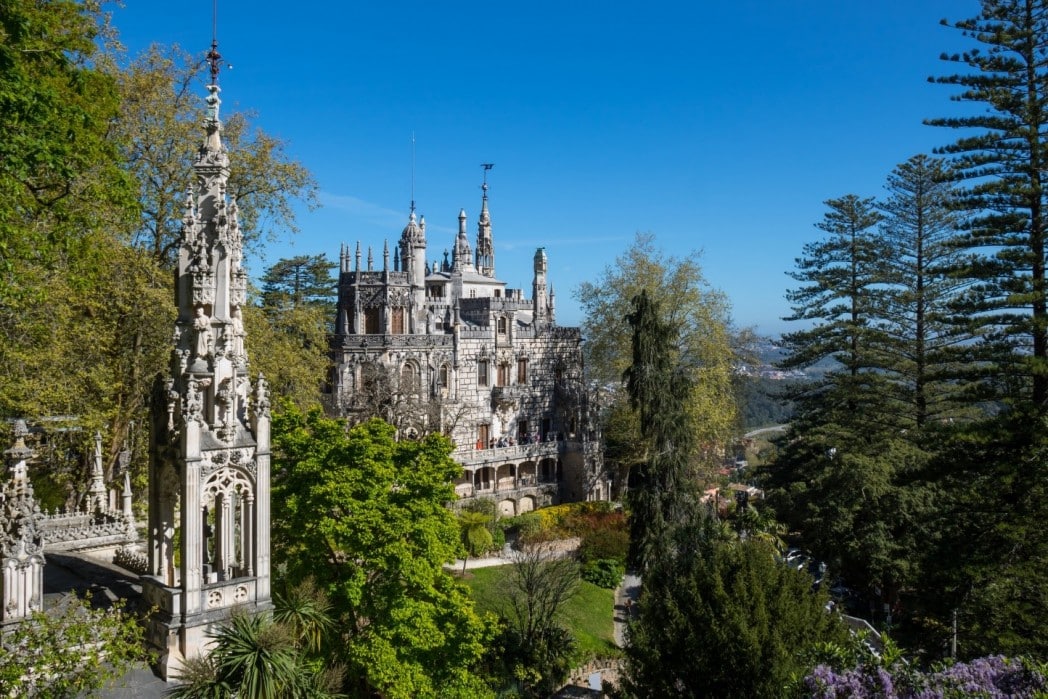
Image credit : infomastern/Flickr/CC BY 2.0
Park and National Palace of Pena
The Palace of Pena is probably what got Sintra the title of being the place with the Disney castles. The castle looks like it has been taken out of a fairy tale story book, with colors of yellow, blue and fiery orange plastered on the facade. To reach the castle, you have long winding slope uphill which could be avoided if you take a bus. However, I would advise you to try climbing it if you like walking, since the path is picturesque and very beautiful to traverse through.
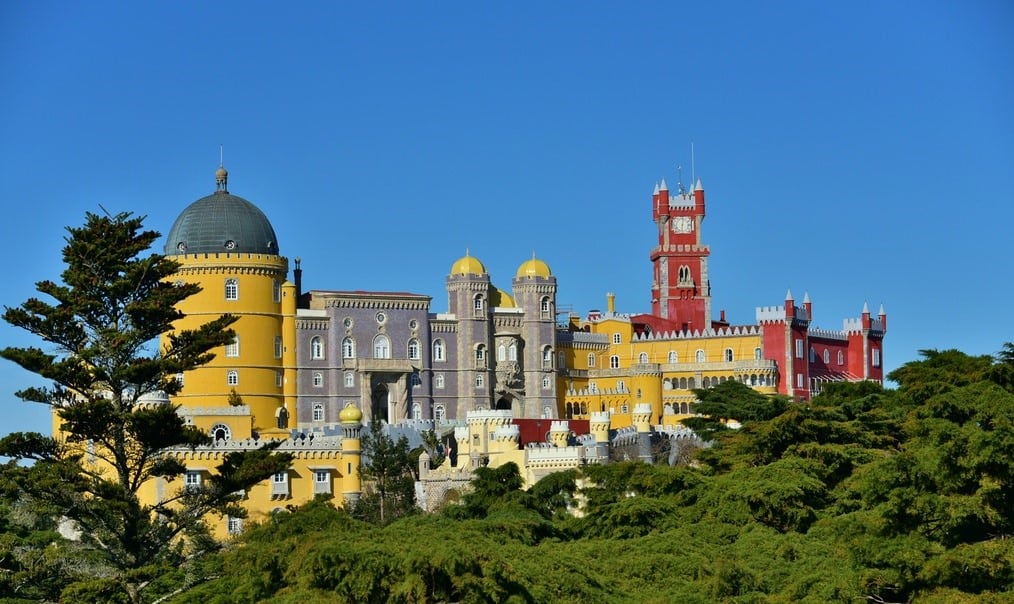
Image credit : Glyn Lowe Photoworks/Flickr/CC BY 2.0
The 19th century Moorish influenced castle was the creative genius of King Ferdinand II with the queen helping him with the interior decors, making it a lavish treat to your eyes.
************
And this brings us to the end of the tour of Lisbon. Hope you would enjoy the journey, and I look forward to bringing in new episodes in the near future. Until then, ciao!





